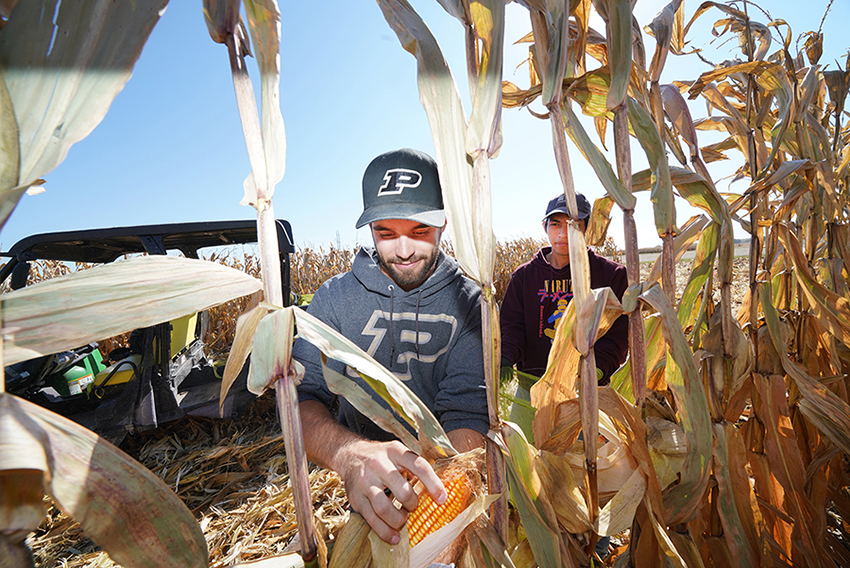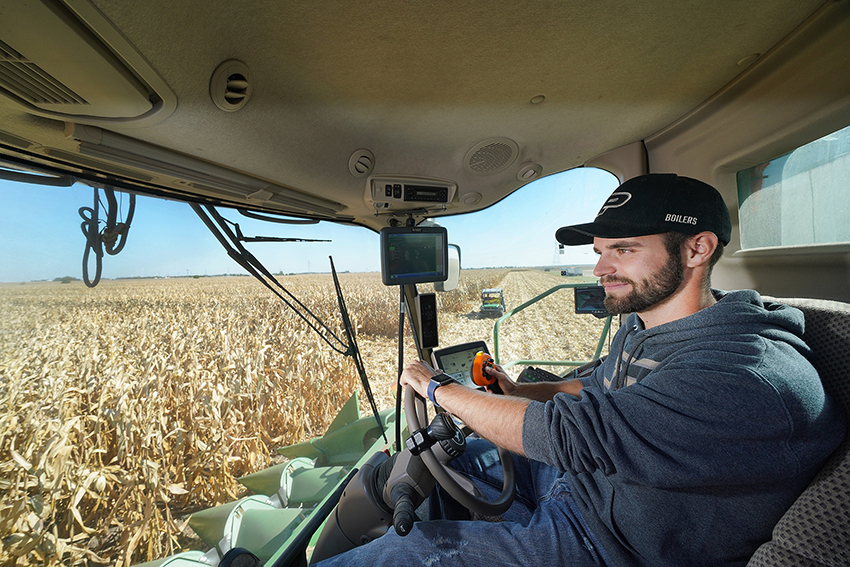Riley Seavers
If farmers are looking at yield benefits of planting cereal rye in front of corn, I can do the research for them and tell them if it’s a practice they should implement on their farm.
- Riley Seavers, MS student, Department of Agronomy
The student
The beauty of the sun dropping behind a wheat field in Kansas confirmed Riley Seavers’ long-held interest in agriculture — one that started with his driving an antique tractor in his mom’s horse pasture around age 8 and nurtured on his grandfather’s small farm. Years later, he was working at a heavy equipment repair shop near his home in Auburn, Indiana, when his boss sent him to the local John Deere dealer for parts. When Seavers commented on a photo there of three combines marching across one field, the shop owner told him about harvest crews. The information prompted Seavers to join a crew that from May to November 2016 followed the wheat harvest from Texas to North Dakota, with that impactful stop in Kansas. At each stop, the crew unloaded their equipment from trailers, harvested up to 10,000 acres and loaded up again to move to the next waiting field. Seavers liked the experience so much he did it again in summer 2018 before coming to Purdue to study agronomy. “I was out running all this equipment and thinking, ‘there’s got to be more than agriculture than these machines,’” he says. “I wanted to develop the knowledge and learn the agronomics to tell farmers how to get a better crop.” As an undergraduate, Seavers had two internships, with Beck’s Hybrids and Winfield United. The two experiences, while very different, both influenced his decision to stay on for master’s study after he earned his BS in May 2021. That fall, he began graduate work under the advisorship of Dan Quinn, assistant professor of agronomy and Extension corn specialist.
The research
“Purdue has an advantage in allowing us to do field-scale research,” says Seavers, who conducts his work on cover crops in corn at two agricultural centers (SEPAC and DPAC) and the Agronomy Center for Research and Education (ACRE). After planting a cover crop of cereal rye in the fall and planting corn into the rye after spring termination, he collects cover crop biomass and soil samples and uses drone imagery to assess the effects of applying nitrogen at different timings to determine their effect on corn growth, yield and nutrient uptake. “Although it’s an environmentally sustainable practice, cereal rye as a cover crop has the potential to lose the farmers money,” Seavers explains. He hopes his findings will help growers make more informed decisions.
Opportunities
Seavers also is studying how farmers should equip their planters in this system. Specifically he is looking at closing wheels, which ensure the proper placement and depth of seed, to help farmers identify which one to use to plant corn following a rye cover crop. Their choice of closing wheel is “huge,” he says, and could impact overall emergence. He credits Quinn with helping him align the projects. “Coordinating things with Dan is easy,” Seavers says. “He’s always trying to make the research better.”
Future plans
“There’s a lot of avenues to pursue,” Seavers says of possible career plans. “With my background, I could apply my master’s degree to bettering equipment for farmers, maybe in a large farm operation. I’m interested in the technology end of it.” In his spare time, he goes home to help his grandfather and uncle farm, and enjoys his family’s lake house near Pokagan State Park.